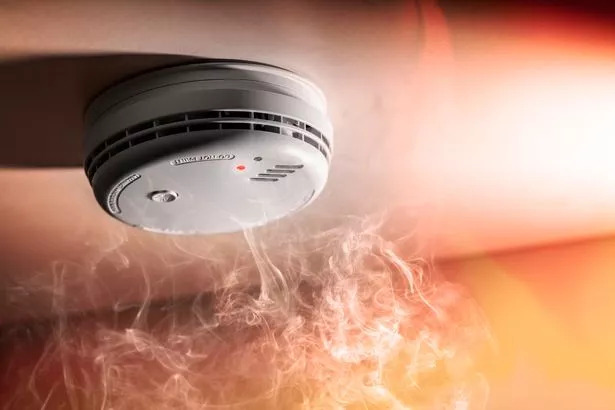I. Introduction
Fire safety is a paramount concern for every homeowner, and at the forefront of this concern are reliable fire alarms. These essential devices play a crucial role in providing early warnings, giving you and your loved ones the precious moments needed to escape in the event of a fire. In this guide, we'll delve into the world of fire alarms, with a specific focus on heat alarms and smoke alarms. Understanding the nuances of these devices and selecting the right ones for your home can make a significant difference in safeguarding what matters most. Let's explore the key factors to consider when choosing the perfect heat and smoke alarms for your living space.
II. Understanding Fire Alarms
Fire alarms come in various types, each designed to detect different aspects of a potential fire. It's crucial to have a foundational understanding of these types to make an informed decision for your home. Smoke alarms, the most common type, detect the presence of smoke particles in the air, signalling the early stages of a fire. Heat alarms, on the other hand, respond to changes in temperature, providing a valuable alternative for areas where smoke may be part of normal conditions, such as kitchens. By grasping the distinctions between these alarm types, you can tailor your fire safety strategy to your home's unique layout and potential risks.
III. Factors to Consider
Selecting the right fire alarms involves careful consideration of several factors. First and foremost, think about the specific locations in your home. Kitchens may benefit from heat alarms, while bedrooms and hallways might be better suited for smoke alarms. Next, consider the sensing technology—ionisation, photoelectric, or a combination of both—and weigh the advantages each offers. Additionally, think about power sources; do you prefer the convenience of battery-powered alarms, the reliability of hardwired systems, or a combination of both for added security? By taking into account these location-specific needs, sensing technologies, and power sources, you can tailor your fire alarm system to provide optimal coverage for your home.
IV. Choosing Smoke Alarms
When it comes to smoke alarms, the market offers three primary types: ionisation, photoelectric, and combination alarms. Ionisation smoke alarms excel at quickly detecting fast-burning fires, making them suitable for areas prone to flaming combustion, like kitchens. Photoelectric smoke alarms, on the other hand, are highly effective at detecting slow, smouldering fires, making them ideal for bedrooms and living spaces. For comprehensive protection, combination smoke alarms merge both technologies, providing a well-rounded defence against various fire types. Understanding the strengths of each type and strategically placing them in your home ensures a robust early warning system tailored to your specific needs.
V. Choosing Heat Alarms
Heat alarms are designed to respond to changes in temperature, providing an alternative or supplementary option to smoke alarms. There are two primary types: fixed temperature and rate-of-rise alarms. Fixed temperature heat alarms activate when a specific temperature threshold is reached, making them suitable for areas where a sudden, intense heat source may indicate a fire. Rate-of-rise heat alarms, on the other hand, trigger when the temperature rises rapidly, signalling a potential fire. Choosing the right type depends on the characteristics of the space you are safeguarding. For instance, fixed temperature alarms may be ideal for kitchens, while rate-of-rise alarms could be more suitable for garages or attics. Matching the alarm type to the environment ensures a tailored and effective fire detection strategy for your home.
VI. Popular Alarms on the Market
For those seeking reliable fire alarms, consider these trusted options, each known for its performance and features:
- A mains-connected smoke detector with interconnectivity features for comprehensive coverage. The fast-fix design simplifies installation, and the 9v battery backup ensures continued operation during power outages.
- A mains-connected heat alarm designed for areas prone to false alarms, such as kitchens. The 9v battery backup provides an added layer of reliability, ensuring continuous functionality.
- An optical smoke alarm known for its sensitivity to slow-burning fires. The 9v battery backup ensures uninterrupted operation even in the event of a power failure.
- A mains-powered heat alarm suitable for environments where smoke detectors may not be ideal. The 9v battery backup guarantees ongoing protection in case of power disruptions.
These models have earned positive reviews for their performance, reliability, and features. As you explore options, consider your specific needs and the layout of your home to make an informed decision for enhanced fire safety.
VII. Installation and Maintenance
Ensuring your smoke and heat alarms are installed correctly and well-maintained is crucial for their effectiveness. Follow these steps to set up a robust fire detection system:
1. Strategic Placement
- Install smoke alarms in each bedroom, outside sleeping areas, and on every level of your home. Place heat alarms in areas like kitchens and garages, where smoke detectors might be prone to false alarms.
2. Follow Manufacturer Guidelines
- Adhere to the manufacturer's installation guidelines for optimal performance. Pay attention to recommended distances from corners and walls.
3. Test Regularly
- Test your alarms monthly to confirm they are operational. Most alarms have a test button that, when pressed, activates the alarm briefly.
4. Battery Replacement
- For battery-powered alarms, replace batteries at least once a year, or sooner if the low-battery warning chirps. Hardwired alarms may have backup batteries that also need regular replacement.
5. Keep Alarms Clean
- Dust and debris can hinder sensor performance. Regularly clean the alarms using a soft brush or a vacuum cleaner attachment.
6. Interconnected Systems
- If you have multiple alarms, ensure they are interconnected, so when one alarm detects a threat, all alarms sound simultaneously for a faster response.
By following these installation and maintenance tips, you can maximise the reliability of your fire alarms and enhance the safety of your home.
VIII. Conclusion
Selecting the right heat and smoke alarms is a fundamental step in fortifying your home against the threat of fire. By understanding the nuances of different alarm types, considering key factors such as location and sensing technology, and choosing from reputable options on the market, you empower yourself to create a customised and effective fire detection system.
Remember, your home is unique, and tailoring your fire alarm strategy to its specific layout and potential risks is essential. Regular testing, maintenance, and strategic placement are the pillars of a reliable fire safety plan.
As technology continues to advance, the landscape of fire detection evolves. Stay informed about the latest innovations, and be proactive in updating your system to ensure it remains at the forefront of home safety.
Investing time and thought into your fire alarm choices today is an investment in the safety and well-being of your household tomorrow. With the right alarms in place and a commitment to ongoing maintenance, you can rest assured that you've taken a significant step toward safeguarding what matters most.








